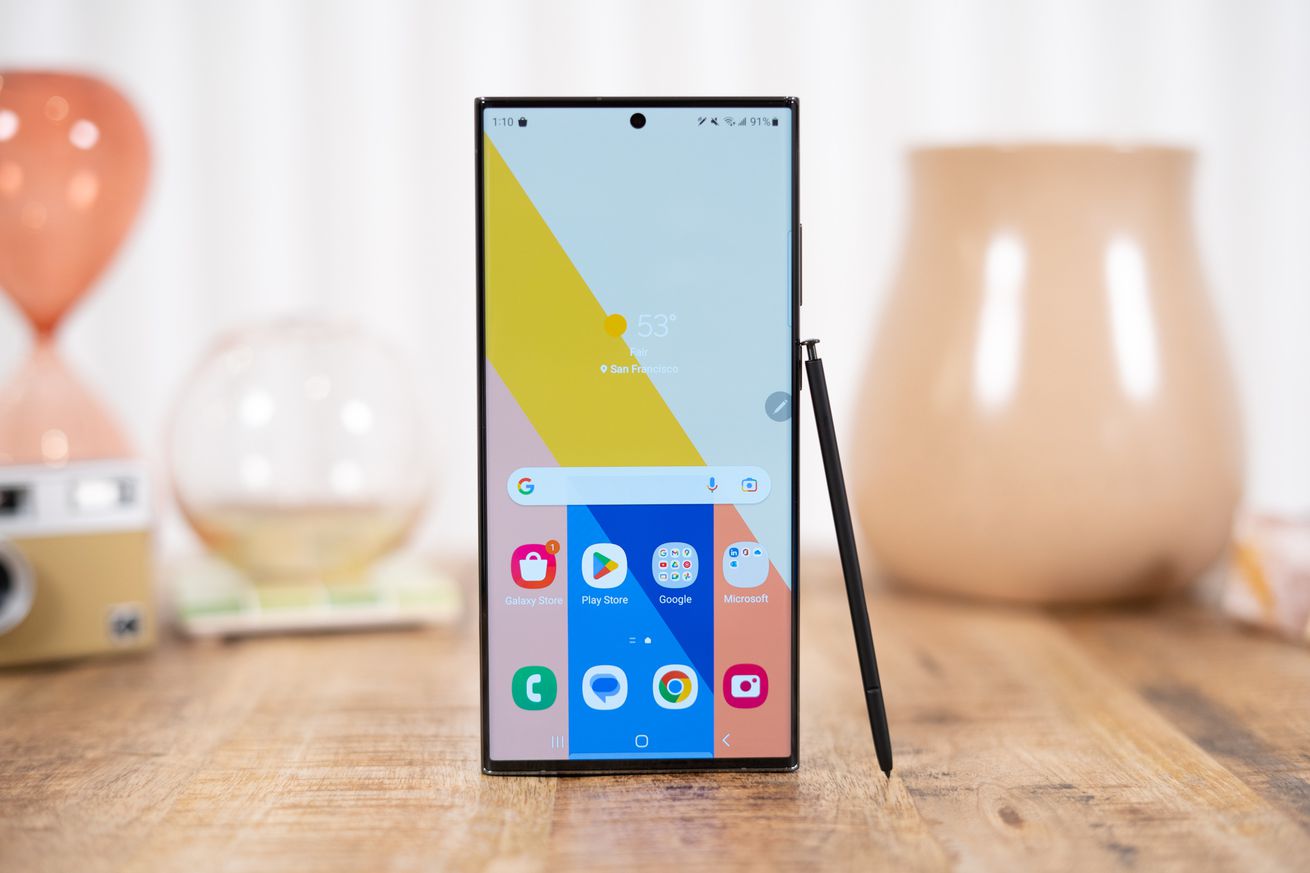
The Samsung Galaxy S23 Ultra is a minor update to a spec monster
The Samsung Galaxy S23 Ultra is an S22 Ultra with an extra layer of polish — figuratively speaking. Compared to the outgoing model, it comes with an updated processor, a new 200-megapixel main camera sensor, and a tweak to the form factor. The built-in S Pen is still here, naturally. And thankfully the price hasn’t inflated. In fact, the starting MSRP of $1,199.99 now comes with 256GB of storage — double last year’s base model. It’s a little extra shine on what was already Samsung’s star smartphone.
The high-res camera is the big story on the S23 Ultra, making the jump from 108 megapixels to 200 megapixels this year. That doesn’t mean you’ll be taking 200 megapixel photos with it; most of the time, it bins 16 pixels together to improve light gathering and spits out a much more manageable 12-megapixel image. You can take a 200- or 50-megapixel image, but most of us aren’t making wall-size prints of our photos and don’t need that kind of resolution. Samsung also claims that the main camera’s optical image stabilization is more robust this year, correcting for 3 degrees of shake versus 1.5.
The other three rear cameras remain unchanged: a 12-megapixel ultrawide, plus a 3x telephoto and a 10x telephoto, both with 10-megapixel cameras. The selfie camera is also now 12 megapixels, a drop down from 40 megapixels in the S22 Ultra. Maybe Samsung hit its megapixel quota and had to borrow some for the main camera. In any case, I ran the numbers, and there’s a total of 244 million pixels between all five of the phone’s camera sensors. I’m not a mathmatician, but I can tell you that’s a lot of pixels.
The S23 Ultra’s raw screen specs are unchanged; it still offers a huge 6.8-inch OLED with a 120Hz top refresh rate and 1440p resolution. But there’s a couple of subtle changes you can’t see from the surface. The first is that the display itself includes more battery-efficient materials. Samsung has also taken its vision booster tone-mapping a step further; it doesn’t just optimize the screen for viewing in very bright light — it now adapts to a wider range of lighting conditions throughout the day. Samsung credits this “smarter screen” with some battery performance improvements.
Battery life wasn’t a strength on the power-hungry S22 Ultra, but this year’s more battery-efficient chipset — the Snapdragon 8 Gen 2 in US models — should help in that department, too.
The S23 Ultra also features a very slight exterior redesign. The long edges of the phone are slightly less curved, so there’s more of a flat surface to grip when you’re holding the device. The back panel and the screen also curve around the sides a bit less, so you might be less likely to run your S Pen off the edge of the device, which tended to happen with the more rounded design.
Maybe I’m overthinking it, but I like this very small design tweak. It makes the phone look a little boxier, which I like, and it feels a little better in my hand. It’s still absolutely massive and holding the comparatively tiny Galaxy S23 afterward felt like a warm embrace. But as far as big phones go, the Ultra seems to be just a little easier to use this time around.
That’s the short list of what’s new. What’s not new is basically everything else: a 5,000mAh battery, IP68 dust and water resistance, and either 8GB or 12GB of RAM depending on the configuration. Your color options this year are phantom black, lavender, green, and cream, and as much as I like a green phone, I have to admit that cream really caught my eye during our hands-on time, and you won’t have to wait long to peep one in person: the S23 Ultra is up for preorder today and starts shipping on February 17th.
1/5
Samsung is clearly sticking with a “more is more” hardware approach with the Ultra, and it remains one of the priciest slab-style phones you can buy right now; the iPhone 14 Pro Max starts at $1,099. Other OEMs, including Apple, have taken a lighter approach with their flagships, specifically with cameras.
While the Ultra offers a whole mess of cameras to cover different focal lengths and needs, Google and Apple are letting software do some of the lifting. They’re using the high-resolution sensors on their cameras to provide different focal lengths by cropping in to the pixels in the center rather than offering dedicated camera modules for these “focal lengths.” The results are good, too, though the Google Pixel 7 Pro’s 10x crop isn’t quite as clean as the dedicated 10x lens on the S22 Ultra. It’ll be interesting to see if — and where — Samsung adopts this method in the future. Chances are, it’s something we’d see in the standard S-series models. For now at least, Samsung’s definition of Ultra continues to mean “no compromises.”

